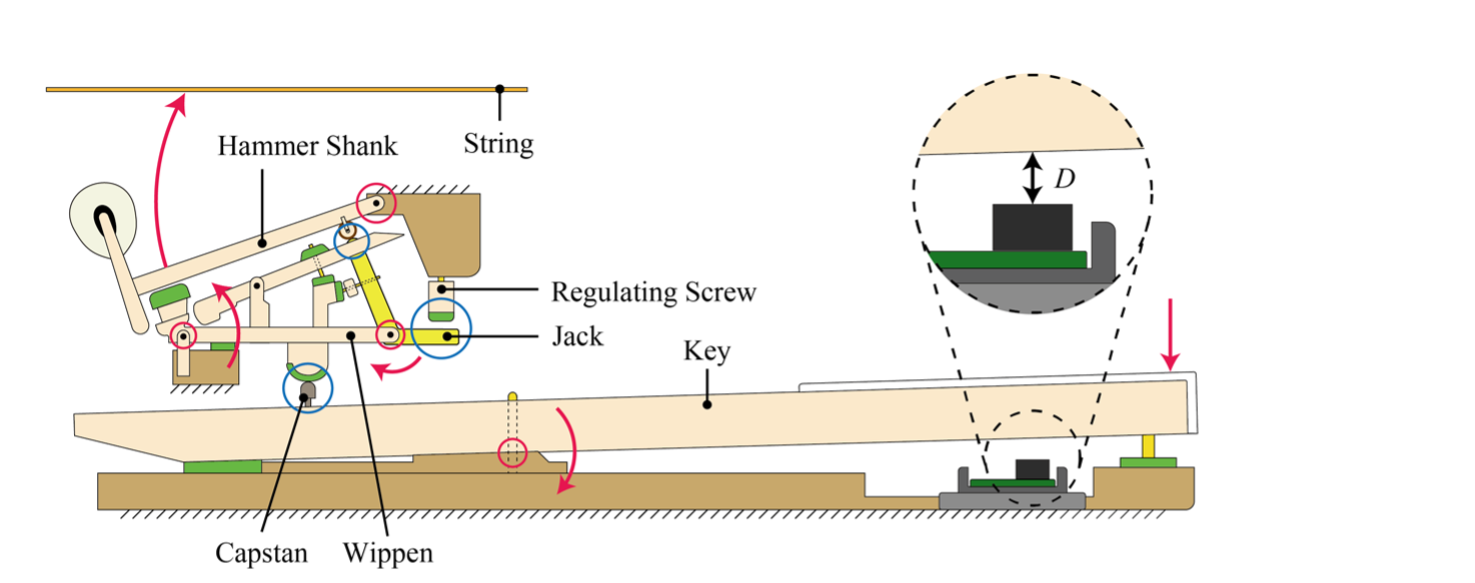Can pianists really change timbre by touch? Science says yes!
October 1, 2025 - PIano Industry Magazine
For over a century, pianists, teachers, and scientists have debated a tantalizing question: can a pianist truly change the timbre of a note simply through touch or is it just an illusion of the ear?
Now, a team led by Dr. Shinichi Furuya of the NeuroPiano Institute and Sony Computer Science Laboratories has provided the first scientific proof that the answer is yes. Their groundbreaking study reveals not only that timbre can be shaped by touch, but also how pianists physically achieve it.
Capturing the Invisible
Creativity in art is often about nuance - a brushstroke here, a bow pressure there. But the piano, with its hammer-and-string mechanism, has long seemed immune to such subtlety. Beyond loud and soft, how much influence could a pianist really have?
To find out, the team developed Hackkey, a proprietary high-precision, non-contact sensor system capable of tracking the movement of all 88 keys at 1,000 frames per second with 0.01 mm accuracy. This technology is sensitive enough to capture the tiniest flicks, accelerations, and releases that escape the human eye.
Using Hackkey, they recorded 20 internationally renowned pianists performing passages while deliberately shaping contrasting timbres such as bright vs. dark and light vs. heavy.
Listening With New Ears
The next step was to test perception. In a psychophysical experiment, 40 listeners - half pianists, half with no formal training - were asked to evaluate the recordings. The results were remarkable: all listeners consistently perceived the pianists’ intended timbres, regardless of musical background.
Trained pianists, however, displayed greater sensitivity, able to detect subtler shades of tone color. Crucially, these differences were recognized even when volume and tempo were held constant, dispelling the long-standing belief that dynamic and tempo shifts are the sole sources of timbral illusion.
The Motor Secret Behind Timbre
With the data in hand, the researchers applied a linear mixed-effects (LME) model to identify the specific movement features linked to timbre. The analysis revealed that differences were concentrated in a small set of motion features - including acceleration during escapement (the moment the hammer disengages from the key) and tiny deviations in hand synchronization.
To confirm, pianists performed notes varying only one of these features. The outcome was definitive: listeners still perceived timbral differences, establishing for the first time a causal relationship between key movement and timbre.
Why This Changes the Game
This discovery settles a debate that has simmered since the 19th century: timbre is not a poetic illusion but a real, physical phenomenon shaped by touch.
For piano pedagogy, the implications are enormous. Teachers can now point to measurable motor actions rather than abstract metaphors. Pianists may benefit from scientifically guided practice methods, while students can avoid inefficient habits that waste years of effort.
The impact may stretch far beyond the piano. The study shows how fine motor control shapes artistic perception, opening new doors for research in rehabilitation, skill transfer, and human–computer interface design.
Art Meets Science
The study affirms what pianists have always believed deep down: the piano, though mechanical, responds to human touch in ways that go far beyond loud and soft. And now, thanks to science, we know that pianists themselves hold the power to shape that enchantment at the molecular level of movement.
What once sounded like metaphor has been proven as fact: pianists really can paint with sound.
Cadenza by Rudolf...
This article is not only read by piano technicians and makers, so I would like to add a short note. I am very pleased that science has now confirmed this possibility, which brings a pianist’s individual playing and the instrument’s sound into even closer connection. However, it is important to understand that this kind of pianism requires a flawless piano action and key movement - not to mention the perfect condition and functioning of all other sound-producing components. Therefore, the proper condition and precise regulation of the piano are essential requirements, and you should always expect this from your piano technician.
Source: NeuroPiano Institute

💬 Want to join the discussion? Comment directly on our Facebook post : Linkedin post : X post
| At this year’s Cremona Musica, Yamaha placed a strong focus on the future of remote and hybrid piano education. Yamaha experts demonstrated how cutting-edge digital instruments and connectivity tools make real-time, high-quality online lessons possible across continents.
| Athena, the world’s first narrow-key digital piano, has officially launched. Co-founded by Linda Gould and Kathy Strauch—two veteran musicians and advocates for accessible music-making—the company introduces its flagship model with keys measuring 5.5 inches per octave, compared to the traditional 6.5.
